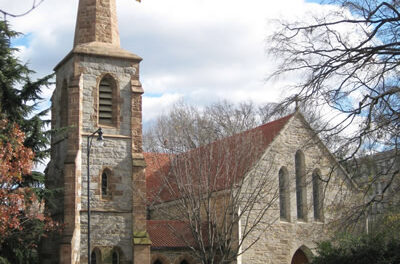Music Director Lorenzo Muti chose an enterprising program to celebrate the Chamber Orchestra of the Triangle’s ending of twenty-nine seasons of considerable artistic and fiscal growth. The number of concerts has expanded from four to six and healthy endowments fund significant rising young soloists. The normal small chamber orchestra was expanded to near 60, easily packing the Carolina Theatre’s stage, for this concert’s ambitious program. The conductor introduced the selections with germane comments from the stage.
The concert opened with a selection of seven of the twelve Swedish Dances, Op. 69 by Max Bruch (1838-1920). These short pieces were originally composed for violin and piano but were orchestrated by the composer for the Vienna Philharmonic. The pieces are perfectly charming. One immediate attraction was the interesting pairing of instruments in several of the dances such as horn with clarinet, flute with oboe, and horn with English horn. Refined solo playing combined with precise and idiomatic ensemble playing characterized the high musical quality experienced over the course of this concert.
Piano Concerto No. 1 in G minor, Op. 25 by Felix Mendelssohn (1809-1847) was an ideal vehicle for the young guest artist, George Li. The concerto is in three movements which are performed without interruption. A brief orchestral crescendo announces the soloist who enters with a burst of bravura showmanship. The first theme group consists of double octaves, crashing chords, and swirling scales followed by a gentle, lyric theme given to the pianist. A brief reprise of the two themes is followed by a short passage for horns and trumpets leading directly into the chief melody of the slow movement sung by the cellos. The pianist embellishes light arpeggios, scales, and appoggiaturas. Brass fanfares related to the earlier bridge passage lead directly into the glittering virtuosity of the fast paced finale.
Seventeen-year-old pianist George Li has racked up an impressive array of awards and concerts. In 2012 he won the Gilmore Young Artist award and was the First Prize Winner in the 2010 Young Concert Artists International Auditions. He played the socks off the Mendelssohn, without score, with complete confidence, and keyboard technique to burn. His articulation was clear no matter the tempo, and he displayed a refined dynamic palette. Enthusiastic and prolonged audience response was rewarded by Li playing a lovely, short encore, a Liszt transcription of “Widmung”* by Robert Schumann.
Symphony No. 7 in C-sharp minor, Op. 131, by Sergei Prokofiev (1891-1953) is an extreme and unjust rarity in the concert hall and on recordings. The Classical Symphony, Op. 25 and the monumental Fifth Symphony have been frequently played throughout our state by resident and visiting orchestras. Op. 131 dates late in the composer’s life after his Sixth Symphony had been “reviled as too full of jarring contrast and dense, expressionist harmonies” according to Harlow Robinson in Sergei Prokofiev A Biography. Symphony No. 7’s having been commissioned for an audience of children may have played a role in the composer eschewing much of his dissonant style. Muti spoke of the work’s emotionally restrained and melancholy mood. The first movement contrasts the opening melancholic first theme in the violins with a broad, lyrical, and warm second theme in the cellos. After recapitulation of the two themes, it ends with tick-tock sounds of the glockenspiel and xylophone. The second movement is a dark, lurching waltz. The slow movement features an oriental-sounding theme shared alternately by the oboe and English horn. The lively rondo-like finale recalls the spirit of Haydn or perhaps the composer’s own Classical Symphony with a slower central episode in which a theme begun by the English horn is taken up by the oboe. The broad, flowing theme from the first movement is brought back leading to a vivid ostinato-like passage for glockenspiel, xylophone, and piano. Prokofiev’s original quiet pizzicato ending was omitted, and the composer’s showier reworking of the rondo theme, used in this concert and most recordings, ends the work satisfactorily.
The greatly expanded orchestra played superbly with wonderful solo contributions from every section. Extensive solos were beautifully played by oboist Bo Newsome paired with Anna Lampidis on English horn. Bassoonists Chris Ulffers and Amy Pollard, clarinetist Kevin Streich, flutist Allison Dimsdale, and harpist Laura Byrne made significant contributions. The three brass sections; horns led by Andrew McAfee, trumpets led by Dave McChesney, trombones led by Wes Parker, along with Tony Granados on tuba, were marvelous. The various percussion instruments were precisely executed by Julia Thomas while timpanist Scott Pollard hammered home at key moments. The important embedded piano part was played by Randall Love. Muti’s programming and leading of Prokofiev’s Symphony No. 7 was one of the season’s major artistic events.
*Edited/corrected 5/25/13.











